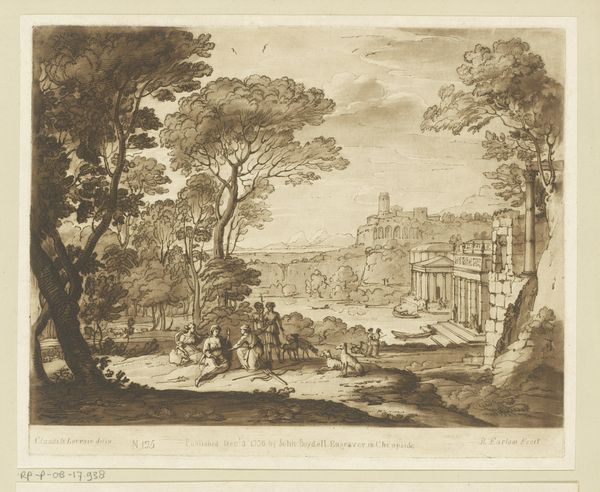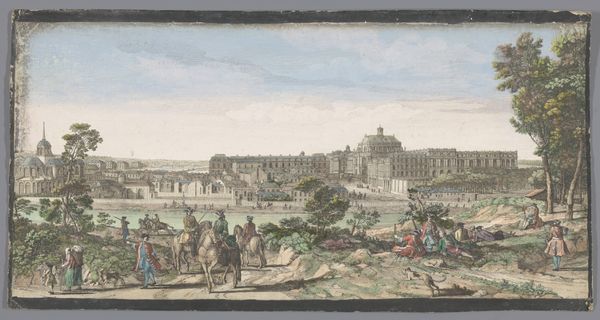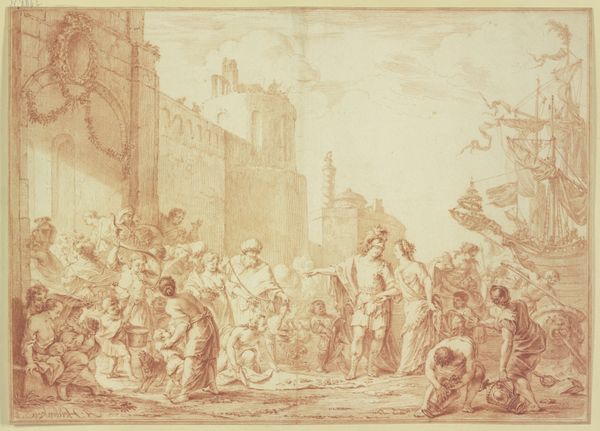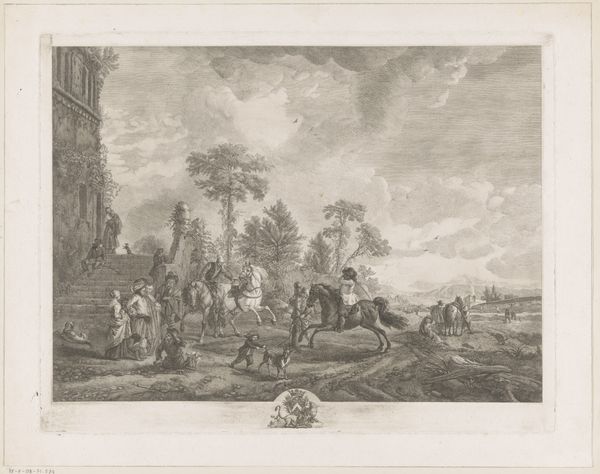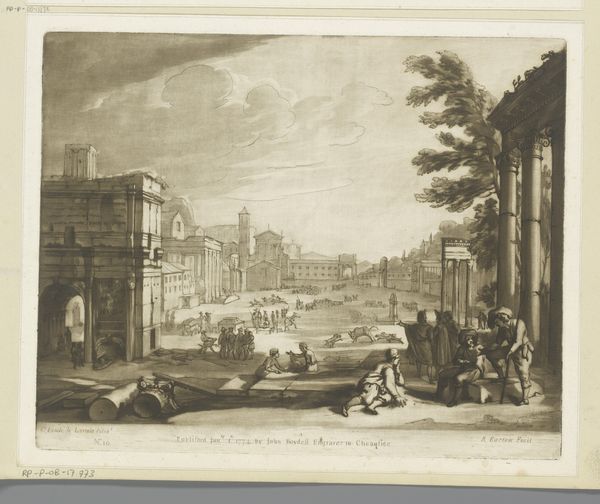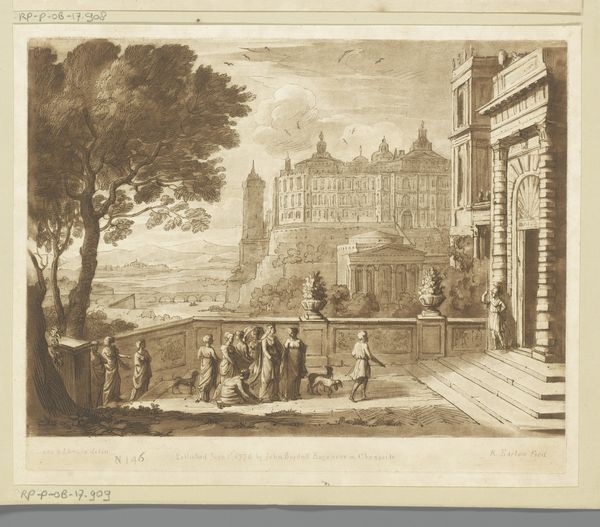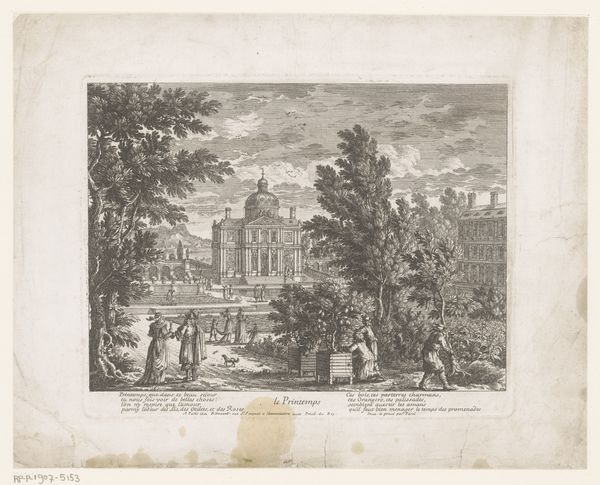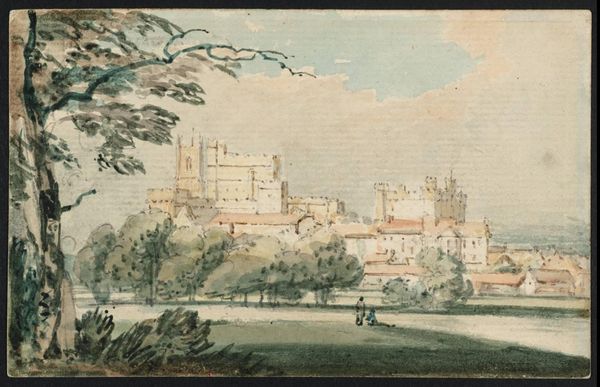
Queen Esther Approaching the Palace of Ahasuerus 1658
0:00
0:00
drawing, print, ink, pen
#
drawing
#
baroque
# print
#
landscape
#
ink
#
coloured pencil
#
pen
#
history-painting
Dimensions: 11 13/16 x 17 1/2 in. (30 x 44.4 cm)
Copyright: Public Domain
Curator: This pen, ink, and wash drawing is Claude Lorrain's "Queen Esther Approaching the Palace of Ahasuerus," created in 1658. Editor: Whoa, the sepia tones really give it this dreamy, faraway feeling, like looking at a memory or a half-forgotten tale. The architecture is so precise, yet it kind of dissolves into the misty landscape. Curator: Indeed. Note the carefully orchestrated layering of the composition. Lorrain masterfully juxtaposes the classical architectural elements—the palace, the colonnade—with the natural forms of the landscape. This serves to both monumentalize the biblical narrative and situate it within a broader historical context. Editor: I love how he places Esther and her entourage right in the middle, but they're so small compared to the backdrop. Makes you think about how individuals measure up against destiny, or history. Plus, look at those gossiping onlookers on the left—they bring a real human element to all this grandeur. Curator: Exactly. And while ostensibly a historical painting, Lorrain manipulates space and light to prioritize overall atmospheric effect, softening the supposed "realism" of the event, which is typical of the Baroque style. Note the effect of the light diffusing through the clouds, washing the architectural forms in its soft glow. It is less about direct illumination and more about the quality of light itself. Editor: That hazy light is what does it, right? It's like the whole scene's bathed in anticipation. You can almost feel the tension as Queen Esther makes her move. Talk about drama, all in earth tones. I never thought historical narratives could look so emotionally evocative. Curator: And that is precisely what makes Lorrain such a fascinating figure. He used the guise of historical or biblical narrative to justify what were essentially complex exercises in light and composition. Editor: Well, he sure knows how to tell a story visually. It makes you wonder how different stories could look in our world now using new digital mediums. Food for thought! Curator: Absolutely, this piece encourages an expansive contemplation of the past and the enduring principles of aesthetic design. Editor: Yep, those sepia tones are going to haunt me, but in a good way!
Comments
No comments
Be the first to comment and join the conversation on the ultimate creative platform.


